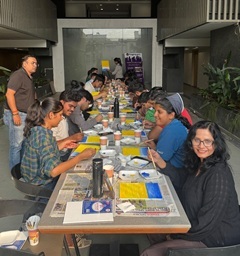Bal mithai is the sweet tooth of Uttarakhand


Bal Mithai, a delectable sweet treat from the heart of Uttarakhand, is a delightful addition to India’s vibrant culinary heritage. This traditional dessert has won the hearts of people across the country, and for a good reason. With its rich, fudge-like texture and distinctive taste, bal mithai has become a symbol of the region’s rich history and culture.
The Origins of Bal Mithai: Bal mithai traces its roots back to the picturesque hill stations of Uttarakhand, particularly the regions of Almora and Kumaon. The origin of this delicious sweet is shrouded in mystery, with many local legends surrounding its creation. Some believe that it was a happy accident during the process of making another local sweet called “khoya.” Regardless of its origins, bal mithai has grown to become a much-loved and sought-after sweet across Uttarakhand and beyond.
The secret to bal mithai’s distinct taste lies in its simple yet carefully chosen ingredients. The primary ingredient is “khoya” or “mawa,” a thick, condensed milk product obtained by simmering milk for hours. The other ingredients include cane sugar and small sugar balls which give the sweet its iconic appearance.
Preparing bal mithai involves cooking khoya with cane sugar. There are variations to it like using cocoa powder and sugar. It is cooked until it forms a thick, fudge-like consistency. The mixture is then spread onto a flat surface and allowed to cool. Once cooled, it is cut into small cubes or rectangular pieces. Finally, the pieces are rolled in sugar balls, ensuring they are evenly coated with the sugar balls.
Bal mithai holds a special place in the hearts of the people of Uttarakhand. It is an integral part of their culture and is often served during special occasions, festivals, and family gatherings. The sweet is also commonly exchanged as a token of love and affection during Diwali, Holi, and other celebrations.
For visitors to Uttarakhand, bal mithai makes for a delightful and memorable souvenir. The sweet’s long shelf life ensures that you can carry it back home and share it with friends and family. You’ll find bal mithai at local sweet shops across the region, often packaged in attractive boxes that make for perfect gifts.
While bal mithai is a sweet indulgence, it also offers some nutritional benefits. The primary ingredient, khoya, is a good source of protein and calcium, which are essential for maintaining strong bones and muscles. However, like with any other sweet, moderation is key to enjoy the taste and reap the health benefits without overindulging.
Image credit: https://commons.wikimedia.org/wiki/File:Bal_mithai.jpg This file is licensed under the Creative Commons Attribution 3.0 Unported license.

Create, Connect, Collaborate!
